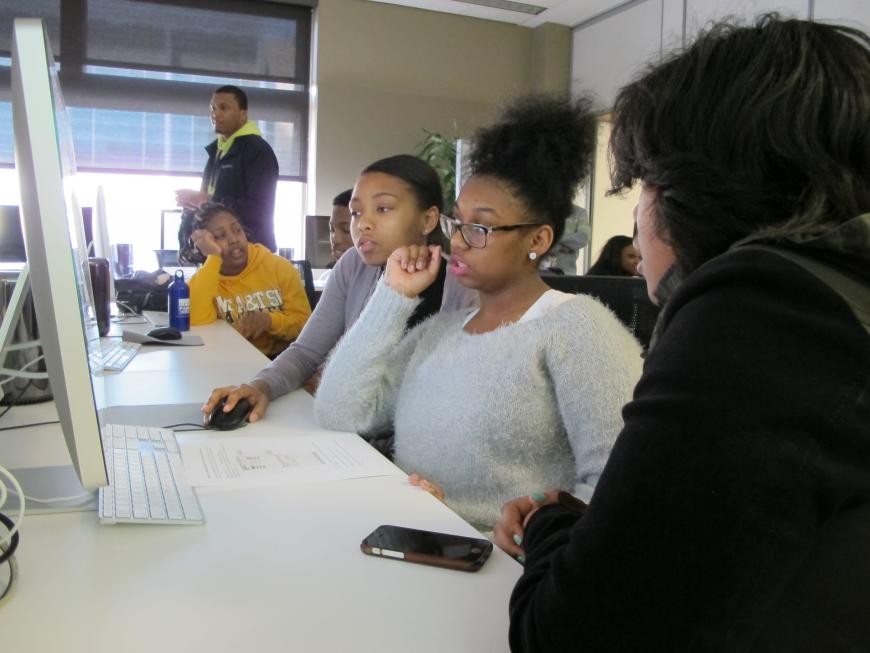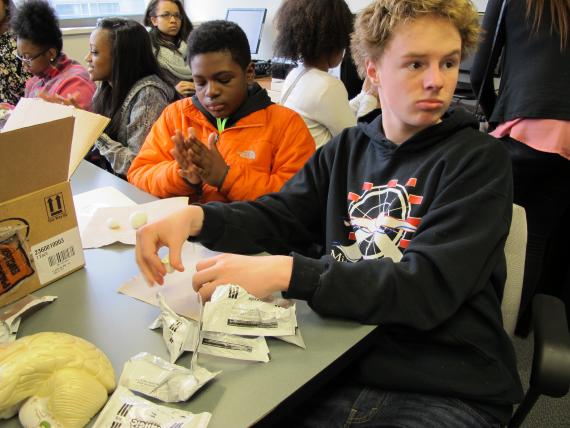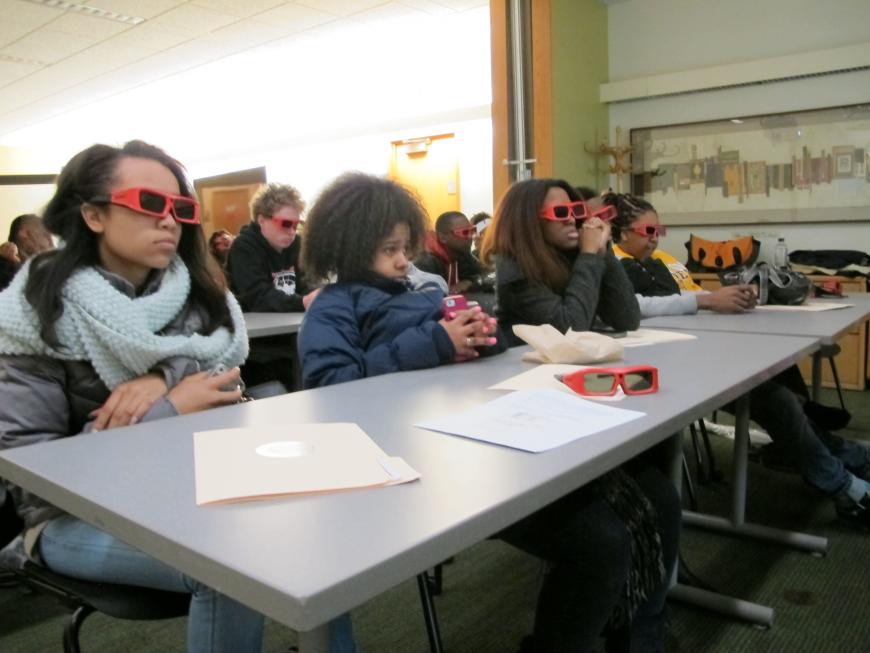April 30, 2015
by Benjamin Recchie
“I used to think the brain was the most wonderful organ in the body,” said first-year graduate student Nick Nichiporuk to twenty students from Kenwood Academy packed into a conference room in the Biopsychological Research Building on campus. “Then, I realized it was the thing telling me that.” Nichiporuk’s joke was greeted with groans and scattered snickers, but the day that followed—Brain Awareness Day—was greeted with much more interest from the students.
Nichiporuk—part of the High Performance Electrical NeuroImaging (HPEN) Laboratory of Stephanie Cacioppo, assistant professor of psychiatry and behavioral neuroscience, and John Cacioppo, the Tiffany and Margaret Blake Distinguished Service Professor of psychology—started the day off by explaining the basics of the functioning of the brain, how neurons work, and how we can measure the electrical impulses of the brain with an electro-encephalogram (EEG) to understand its function. He then handed it over to his fellow graduate student Elliot Layden, who took the students deeper into one specific reason to study the brain: sports-related concussions. (It’s a topic near and dear to Layden, who suffered a concussion while racing bicycles while a student at Indiana University.)
Then it was off to an EEG lab, where Ivo Gyurovski soaked a net of 128 electrodes in a shampoo solution (for better conductivity, he explained), then fitted it to Layden’s head. As the students looked on, Gyurovski showed them a readout on a computer. Every time Layden blinked, the lines on the monitor spiked. EEGs can tell what parts of the brain are engaged, Gyurovski said, giving a clue as to what the subject is doing, but they still can’t be used to read someone’s thoughts.
Next, the students got their own brains—or rather, modeling clay to make their own hand-held models of brains. Layden and Nichiporuk ran down all the major structures in the human brain and showed how the students how to reproduce them in clay.
Then it was time for the Research Computing Center (RCC) to take over. The group walked over to the John Crerar Library’s Kathleen A. Zar Room, where Robin Weiss, research application engineer, introduced students to the basics of supercomputing. He likened parallel processing, the heart of the Midway computing cluster, to speeding up a pizza delivery operation not by equipping the driver with a faster car or a more efficient route, but by providing more drivers.
The students stepped into the Computer Science Instructional Laboratory for a hands-on experience performing a 3D reconstruction of the brain. Weiss walked the students through using the scientific visualization program Amira to examine images of a brain—his own. (“I keep a copy of my brain on the supercomputer at all times,” he deadpanned.) They viewed the brain in slices, then as a three dimensional whole, then as a functioning object, displaying neural impulses within the brain in real time.
Finally, Weiss walked with the group back to the Zar Room for a demonstration of how 3D visualization technology helps scientists to understand their data better. Students ooh’ed as he showed them a 3D scan of a prehistoric fossil made in Europe; too rare to ship to the United States for analysis, researchers took a detailed 3D scan and sent it to the University of Chicago instead, where a 3D printer was used to make an identical replica. After a pizza lunch, the students returned to their school, much more mindful (one presumes) about their brains.
Brain Awareness Day, a joint production of the Research Computing Center and the HPEN, helped along by the Office of Civic Engagement, as part of the 2015 Brain Awareness Week, an annual global campaign to increase public awareness of the progress and benefits of brain research. This marks the third straight year that Kenwood students have taken a break from their classes to come to campus to learn about that “most wonderful” organ.


